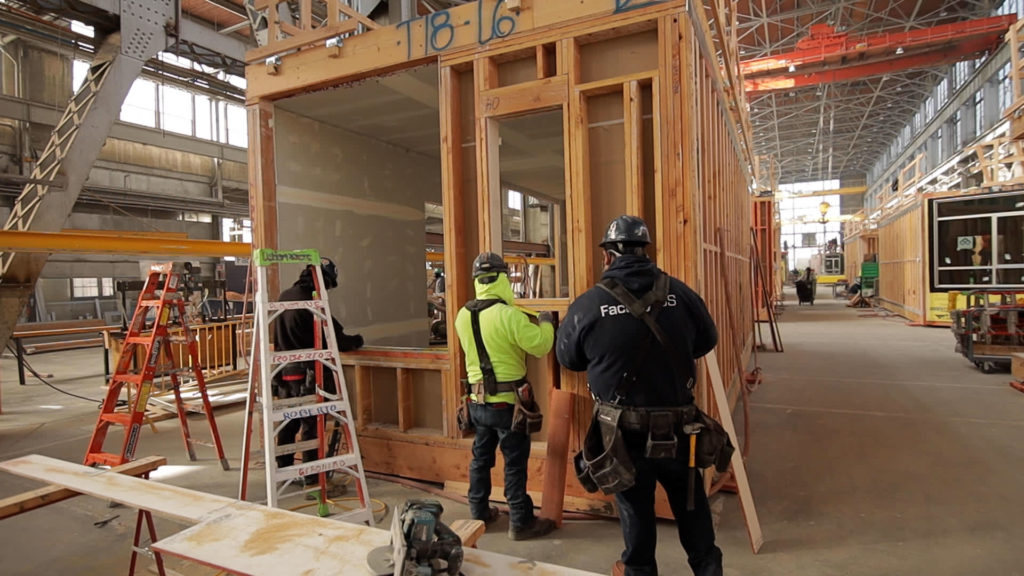In the world of manufacturing, where innovation and efficiency reign supreme, factory owners and General Managers (GMs) constantly seek ways to enhance their operations. These industry leaders are often in the spotlight, and interviewed about their strategies to boost production, streamline processes, and bolster sales. These insights, when shared, have a ripple effect, influencing other factory managers to adopt similar practices. However, what if there was a new approach, a simple yet potentially transformative method to elevate factory performance by just 1%?

Intriguing as it may sound, this notion revolves around a fundamental shift in perspective. Instead of relying solely on top-down directives, some forward-thinking owners and GMs are now engaging in a different kind of conversation with their employees – one that seeks to tap into the collective wisdom of their workforce. What if every individual within the company were given a voice, and their thoughts on how to improve the factory were not only heard but also acted upon? This article explores the concept of the “1% Factory Improvement Challenge” and its potential to revolutionize manufacturing.
In the corridors of modular factories, where precision and innovation intertwine, leaders have long been asked about their secret to success. Be it through interviews, conferences, or industry publications, these leaders have generously shared their strategies for achieving excellence. Such knowledge-sharing has undoubtedly driven progress within the sector. Yet, as the saying goes, “two heads are better than one.” What if, instead of relying solely on the expertise of a few, the wisdom of many could be harnessed to bring about incremental yet substantial improvements?
This brings us to the heart of the matter: the 1% Factory Improvement Challenge.
Imagine if every factory owner or GM took the time to sit down with every single member of their organization, from floor workers to supervisors, and asked a simple yet profound question: “What do you think you our company could do to enhance our factory’s performance by just 1%?” The results could be game-changing.
This unconventional approach challenges the traditional hierarchical structure that often characterizes factory management. It places value on the insights, experiences, and creativity of each employee, regardless of their position within the organization. It recognizes that innovation can come from unexpected sources and that the collective effort of a motivated workforce can lead to significant improvements.
The 1% Factory Improvement Challenge is not just about seeking ideas; it’s about fostering a culture of continuous improvement. It acknowledges that even the smallest of changes, when multiplied across the entire factory, can have a substantial impact. In an industry where margins are often razor-thin, a 1% improvement in efficiency, productivity, or quality can translate into significant cost savings and increased competitiveness.
Moreover, this approach promotes employee engagement and empowerment. When individuals feel that their opinions matter and that their ideas can lead to tangible improvements, they become more invested in the success of the factory. This, in turn, can boost morale, reduce turnover, and create a positive work environment where innovation is encouraged.
/cdn.vox-cdn.com/uploads/chorus_asset/file/13890766/job_interview_office_space.jpeg)
Proper Implementation
To implement the 1% Factory Improvement Challenge effectively, factory owners and GMs must be prepared to listen actively and without judgment. They must create a safe space for employees to express their ideas and concerns openly. In doing so, they may uncover innovative solutions to longstanding problems, identify bottlenecks in processes, and discover opportunities for optimization that may have otherwise remained hidden.
Additionally, it’s crucial for factory leaders to communicate the importance of this initiative and the potential benefits it can bring. When employees understand the significance of their contributions and how they fit into the bigger picture, they are more likely to actively participate in the challenge.
Furthermore, the 1% Factory Improvement Challenge should not be a one-time event but an ongoing process. Regular feedback sessions and follow-ups are essential to track progress, evaluate the effectiveness of implemented ideas, and refine strategies for continuous improvement.
One of the remarkable aspects of this approach is its adaptability to various factory settings and industries. Whether you run a high-tech modular factory or a traditional manufacturing plant, the 1% Factory Improvement Challenge can be tailored to suit your specific needs. It transcends the boundaries of technology and product lines, focusing instead on the universal principle that every employee’s perspective holds value.

Consider a case study of a modular factory specializing in the production of auxiliary dwelling Units (ADU). The factory owner decided to embrace the 1% Factory Improvement Challenge and initiated a series of discussions with employees at all levels of the organization. What emerged from these conversations were a series of seemingly minor suggestions: optimizing the arrangement of workstations, revising the scheduling system to reduce downtime, and implementing a new quality control process.
Individually, these changes might have appeared inconsequential. However, when combined, they resulted in a 1% increase in production efficiency. This seemingly small improvement translated into a substantial reduction in production costs, enabling the factory to offer more competitive prices to customers and ultimately expanding its market share.
The success of this modular factory’s experience highlights the potential of the 1% Factory Improvement Challenge to deliver tangible results. It demonstrates that the power of incremental change, when harnessed collectively, can be a formidable force in the pursuit of manufacturing excellence.
Moreover, this approach is not limited to production processes alone. It can extend to other aspects of factory operations, such as supply chain management, sustainability initiatives, and employee well-being programs. The 1% Factory Improvement Challenge encourages a holistic view of the factory and invites input from all corners of the organization.
In the quest for continuous improvement, the 1% Factory Improvement Challenge also presents an opportunity for factory owners and GMs to foster a culture of innovation. When employees are encouraged to think creatively and contribute their ideas, they become more invested in the success of the factory. This, in turn, can lead to a steady stream of innovative solutions that keep the factory at the forefront of the industry.
As the 1% Factory Improvement Challenge gains traction within the manufacturing sector, it is essential to address potential challenges and pitfalls. One concern that may arise is the sheer volume of ideas generated through this initiative. With every employee having a voice, the influx of suggestions can be overwhelming.
To manage this influx effectively, factory leaders can establish a structured process for collecting, evaluating, and prioritizing ideas. Tools such as idea management software can streamline this process, enabling teams to categorize and assess suggestions based on their feasibility and potential impact.
Another challenge is ensuring that the 1% Factory Improvement Challenge does not become a superficial exercise in gathering ideas without meaningful action. To prevent this, factory leaders must commit to implementing a significant portion of the suggestions received. Demonstrating that employee input leads to concrete improvements reinforces the value of participation and encourages ongoing engagement.
Furthermore, some employees may be hesitant to speak up, fearing repercussions or believing that their ideas will go unnoticed. To address this, it is essential to create a culture of psychological safety, where individuals feel comfortable sharing their thoughts without fear of criticism or retribution. Leaders should actively promote this culture and provide channels for anonymous submissions if necessary.
The 1% Factory Improvement Challenge represents a paradigm shift in the world of manufacturing. It encourages factory owners and GMs to tap into the collective intelligence of their workforce, harnessing the power of incremental change. By asking every employee for their input on how to improve the factory by just 1%, organizations can unlock a wealth of innovative ideas and foster a culture of continuous improvement.
While this approach may present challenges, the potential benefits far outweigh the drawbacks. Increased efficiency, cost savings, employee engagement, and quality are just a few of the benefits of the 1% Factory Improvement Challenge.
For information on how to implement and use the 1% Factory Improvement Challenge, contact me for more information at modcoach@gmail.com
.



